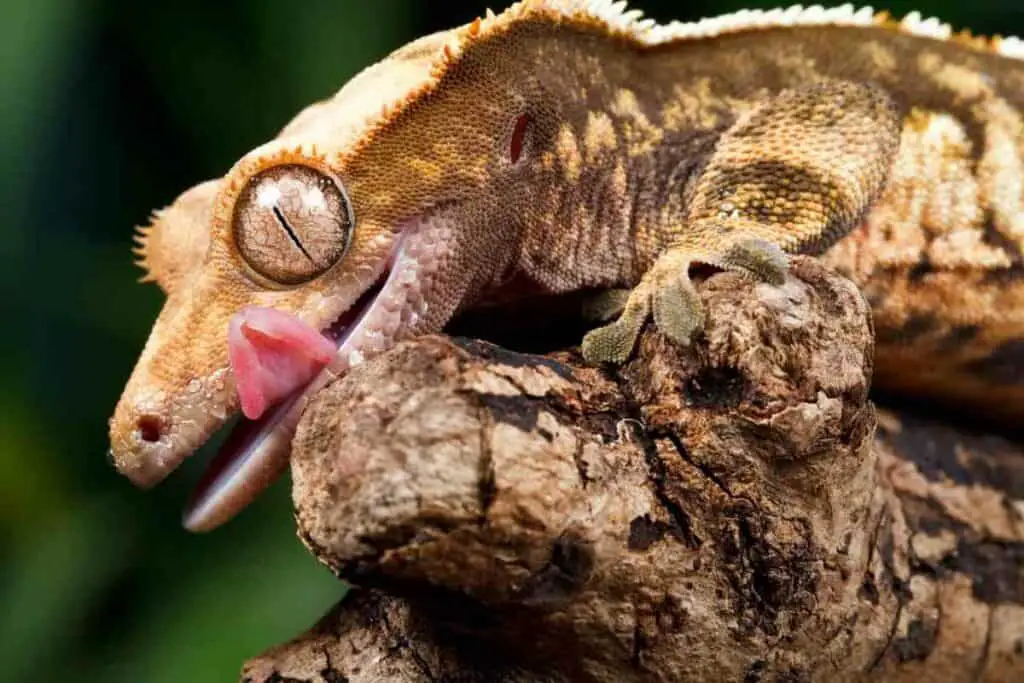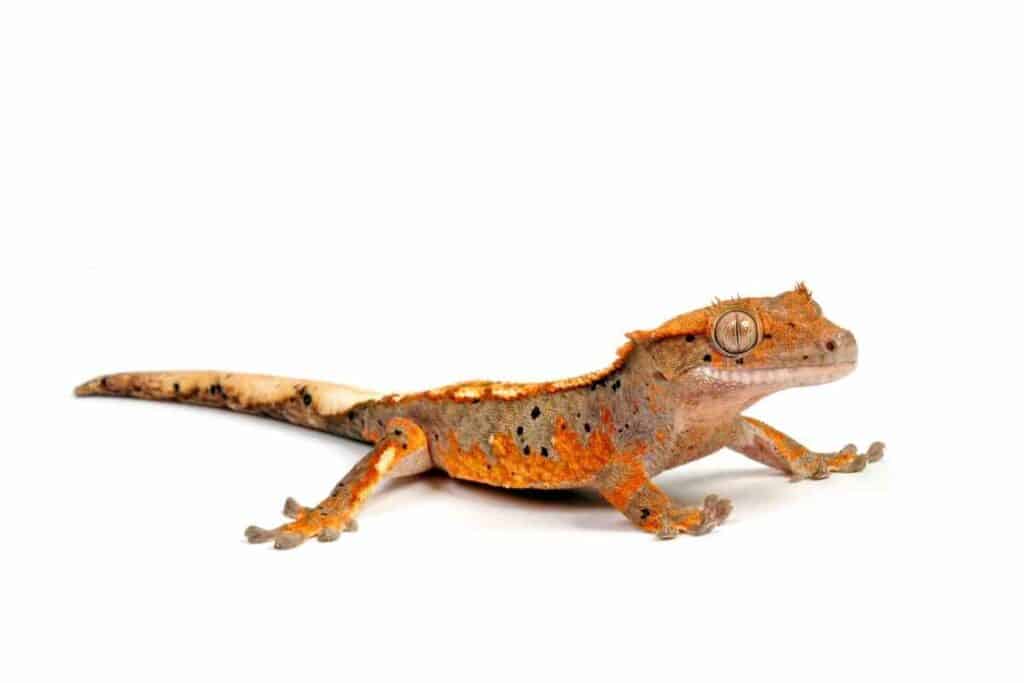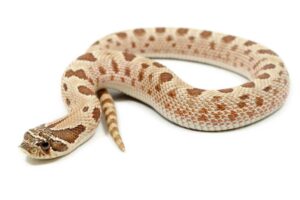The Crested Gecko (Correlophus ciliatus) is a vulnerable species that was thought to be extinct until 1994 when a new population was discovered living in New Caledonia.
The export of these creatures has been prohibited since then, but there are now large breeding facilities in the United States and Europe,
Table of Contents
How Big Do Crested Geckos Get?
Female and male crested geckos reach a snout-to-vent length of 4 to 4.5 inches (SVL) and 8 inches in total length when they are about 15 to 18 months old. When mature, crested geckos weigh approximately 35 grams.

Younger crested geckos can be smaller than 3 inches long while older ones can grow to more than 10 inches in length. The size of your crested gecko also depends on where it lives.
Crested Geckos Size Chart
| Age Stage | Weight | Body Length with Tail |
| Hatchling | 1.5-2 grams | 2.5-3 inches |
| Baby (2 months) | 3 grams | 3-4 inches |
| Juvenile (3 months) | 4 grams | 3-5 inches |
| Juvenile (4 months) | 5 grams | 4-6 inches |
| Juvenile (5 months) | 7 grams | 4-6 inches |
| Juvenile (6 months) | 9 grams | 5-7 inches |
| Juvenile (9 months) | 16-35 grams | 6-9 inches |
| Juvenile transitioning to adult (12 months) | 35-50 grams | 9-10 inches |
| Adult (18-24+ months) | 35-55+ grams | 9-12 inches |
How Long Does It Take For a Crested Gecko To Get Full Size?
Crested geckos grow quickly and full size is reached between 12-24 months of age. At that point, they are between nine and ten inches long (snout to vent). Males tend to be a little larger than females when reaching maturity.
The right diet, as well as the correct temperature and humidity, are all important factors that influence how fast your Crested Gecko grows up.
The ideal temperature for your Crested Gecko is between 75-78 degrees Fahrenheit. It’s also crucial to maintain a suitable humidity level of around 70%. They are all unique individuals, however, meaning they will mature at different rates.
Crested Gecko Not Growing Factors
The following factors can contribute to a gecko not growing. Do note that it is very rare for the reptile to stop growing due to any of these issues alone, but can be taken into consideration when you are trying to determine if your pet is having growth problems.
Infection
One of the most common issues that can lead to a gecko not growing is an infection. Infections in crested geckos are often caused by unclean conditions, and they will usually prevent your pet from eating.
Stress
Geckos have a variety of different stress factors that can contribute to a lack of growth.
Housing
All geckos should be kept in an enclosure that is twice as long and tall as the length and height of your pet, respectively.
This will ensure adequate room for when they have reached maturity. Additionally, their houses need to have plentiful bedding and foliage for climbing and hiding.
Diet
Nutrition is an important factor in your pet’s growth, so be sure to feed your crested gecko a varied diet that contains all the necessary vitamins and minerals for their health.
Do not forget to provide them with fresh water daily. While it may seem like you are providing more than enough food by overfeeding, be sure to limit it so they do not grow too quickly.
Activity
Geckos require a lot of exercise, and if you are not providing your crested gecko with enough time outside the enclosure, growth will suffer as a result.

For young gecko’s this means being able to climb around on branches or rocks for at least an hour a day, and for older geckos, it means having at least two hours outside their enclosure.
Incorrect Temperature and Humidity
Incorrect humidity and wrong temperatures can both lead to your crestie not growing. If the tank is too dry, then they will stop eating or dehydrate which in turn halts their growth process.
You should always make sure that the substrate you use has a high enough water content to ensure that it stays moist enough.
Crested Gecko Breeders
Make sure you are getting your crestie from a reputable breeder, as this will help ensure that they have been properly cared for and socialized with other geckos of the same species. A good breeder should also be able to provide you with health records for the gecko.
Illness
If your Crested Gecko’s growth rate is slow and you’ve exhaustively ruled out other factors, see your veterinarian.
They’ll be able to assist you in determining whether there are underlying medical problems causing no weight gain or growth.
Conclusion
It’s crucial to consider if you have enough room for a Crested Gecko and an adequate enclosure before purchasing one. Remember that Crested Geckos can live 10-20 years in captivity, so they’re a long-term commitment in terms of space and time.











